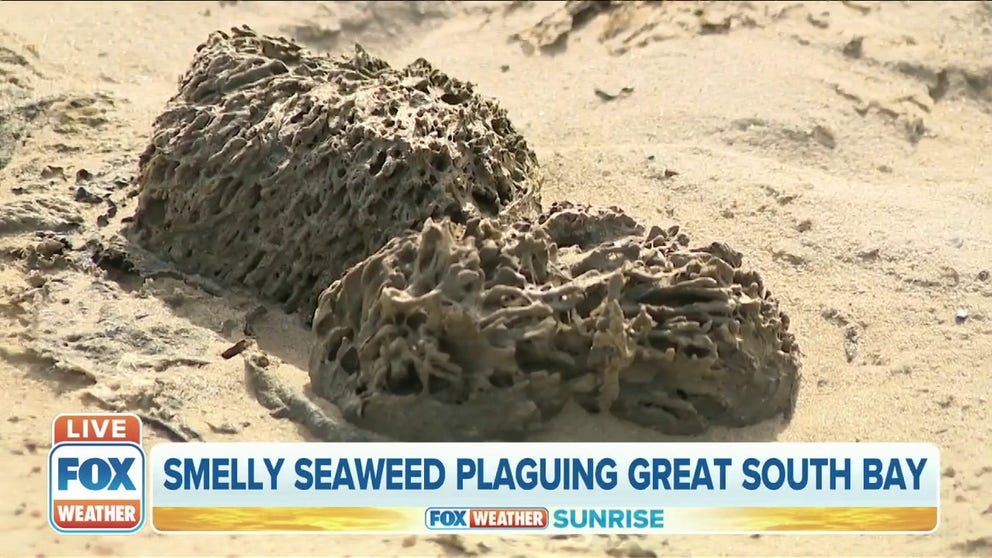Smell from seaweed plaguing Great South Bay could be toxic, experts say
The aggressively spreading species was reported in Europe in the 1980s and has been in North American waters for the last decade and a half
Smell from seaweed plaguing Great South Bay could be toxic, experts say
An increase in a type of Japanese seaweed is leading to smelly, and experts say, potentially toxic bay beaches along the south shore of Long Island.
EAST ISLIP, N.Y. -- An increase in a type of Japanese seaweed is leading to smelly and potentially toxic bay beaches along the south shore of Long Island.
The smell in the Great South Bay is described as rotten eggs or a sewage spill. It’s an invasive red seaweed called Dasysiphonia japonica.
FOX 5 New York reported the red tinge in the water is most noticeable on warmer days with a south wind. When the seaweed dies back, they emit a strong smell of sulfur. Experts said that at high levels, it can be linked to particular health problems, including serious lung irritation.
"It originated from Japan and it's slowly spreading across the globe," Dr. Chris Gobler, a professor at Stony Brook University, told FOX 5 New York. "It likes slightly cooler temperatures, and over the summer as the bay gets warmer, it starts to decay. And come the fall, the decayed seaweed and rotted seaweed smell pretty bad."
The decaying seaweed can also reduce oxygen in the water and harm sea life.
The aggressively spreading species was reported in Europe in the 1980s and has been in North American waters for the last decade and a half.
In 2019, scientists saw a bad outbreak of it, spreading along the south shore of Long Island.
Some ways to take action include limiting the use of fertilizer and updating your septic tank, FOX 5 reported.
